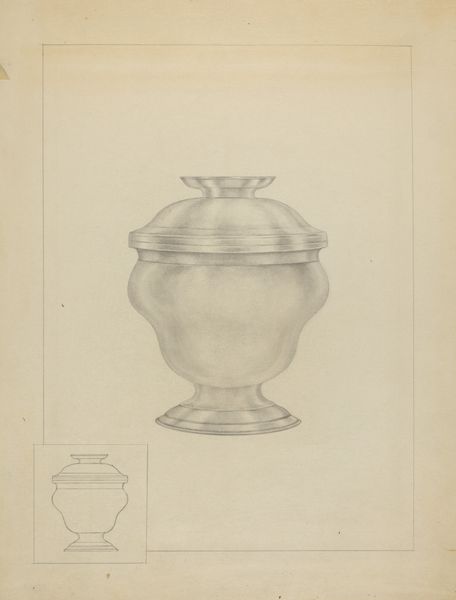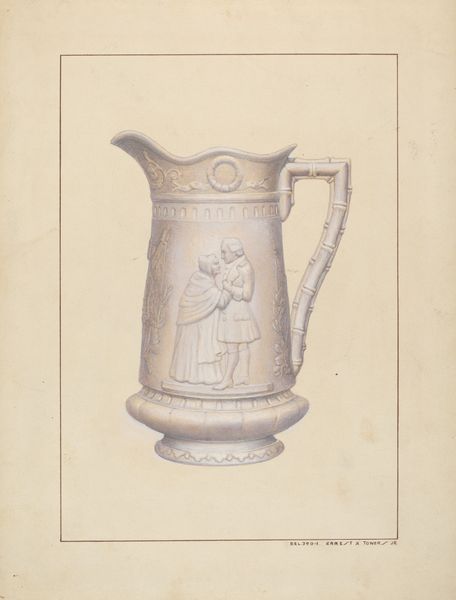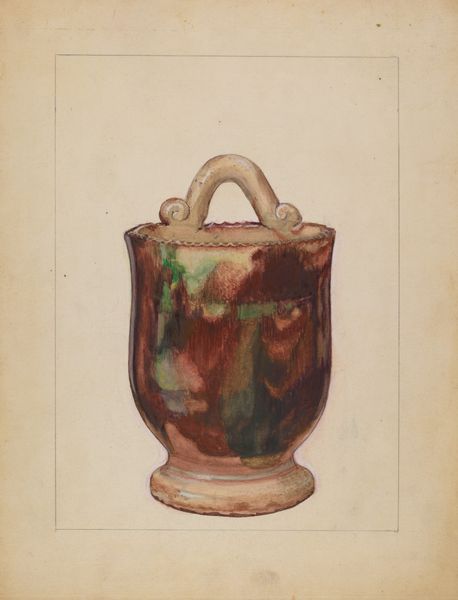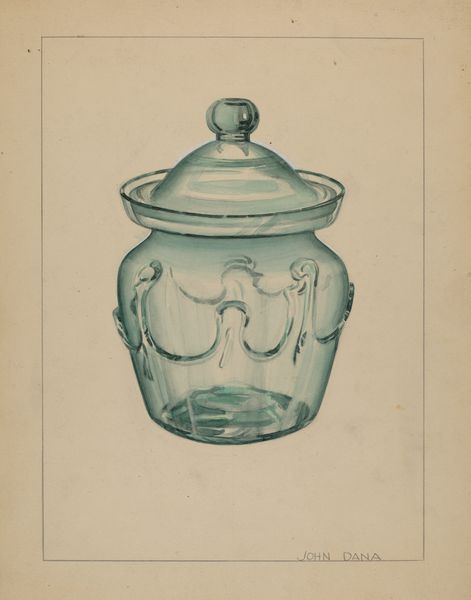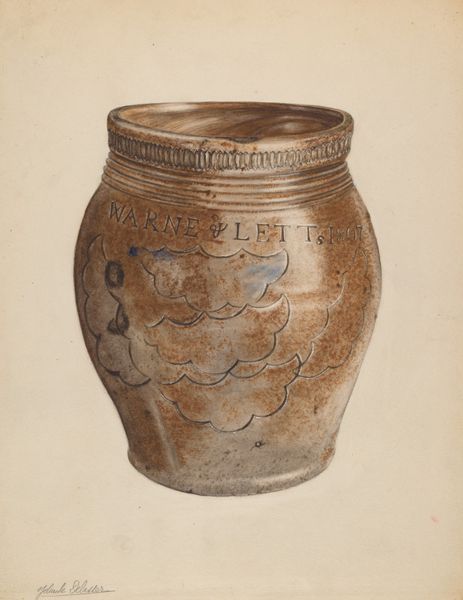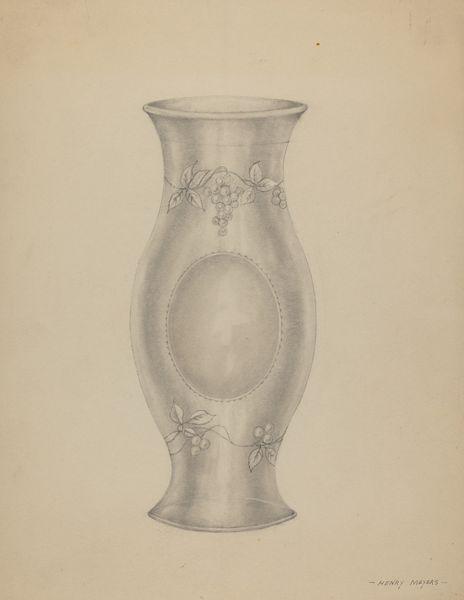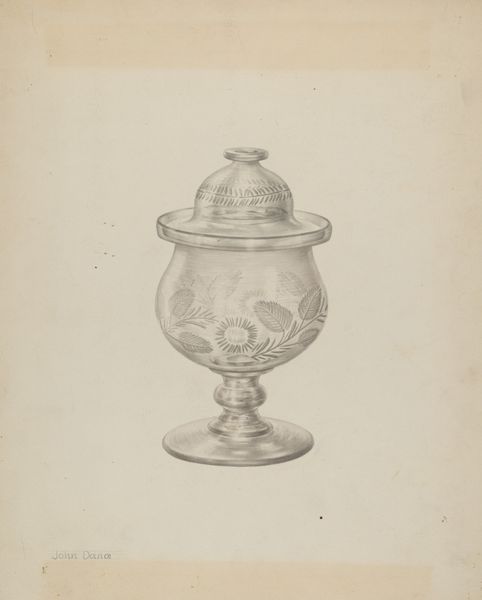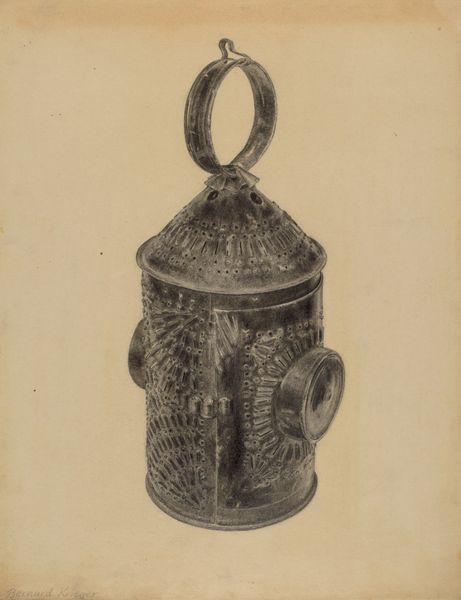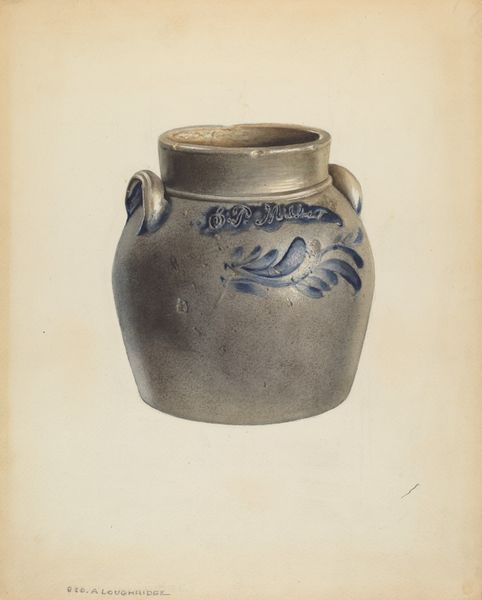
drawing, paper, pencil
#
drawing
#
paper
#
pencil
#
academic-art
#
realism
Dimensions: overall: 28.9 x 22.9 cm (11 3/8 x 9 in.) Original IAD Object: 12 1/2" High 7 1/8" Dia(top) 5 7/8" Dia(base)
Copyright: National Gallery of Art: CC0 1.0
Curator: Let’s consider this drawing by John Dana, created around 1936. He rendered it with pencil on paper and titled it "Vase." Editor: The immediate effect is one of reserved formality. It feels like a carefully planned artifact—perhaps an artifact awaiting execution? I wonder, what stories does this vessel aim to tell? Curator: Absolutely. And how does it achieve this 'reserved formality'? Dana focuses intensely on modeling light across the would-be reflective surface of the vase. Notice how he uses varied pressure to imply subtle material differences? The choice of pencil itself is crucial here—it bridges the space between the preliminary sketch and a finished rendering. Editor: I’m particularly drawn to the iconographic layering happening here. Look closely: we have these classical lion-head handles and a neoclassical frieze along the base—figures in what seem to be Grecian tunics. Above all, that stark cameo portrait disrupts any cohesive reading! Curator: Exactly. The juxtaposition is jarring, even provocative. Could we read this vase as an examination of how civic heroes or even political concepts can be stylized and commodified, abstracted into symbols on everyday objects? This could be a reflection of mass-production during the era it was created. Editor: Perhaps the cameos, combined with the Greco-Roman motifs, are used to evoke specific historical periods of enlightenment or civic virtue. The very concept of "vase" suggests vessels for containing something valuable, perhaps memories or ideals to be preserved. It does leave me curious; if this vase was an actual item what function it would serve. Curator: Agreed, and considering the context of its creation, one could speculate about how anxieties related to history, power, and progress informed its design, and perhaps even its potential production as a functional object. The layered, almost archaeological approach certainly gives one pause. Editor: It certainly does. Thank you for pointing out the deeper material qualities, it helps shed new light on my interpretation of the imagery within this drawing. Curator: Of course. Delving into the context and materiality has deepened my understanding as well; I appreciate you sharing your insights into the symbolic weight of each aspect of this drawing!
Comments
No comments
Be the first to comment and join the conversation on the ultimate creative platform.
